Mold vs Efflorescence
Efflorescence and mold are two common problems that can occur in your home. Both can cause damage to your home, but there are some key differences between the two.
Efflorescence is a white powdery substance that can form on surfaces when water evaporates. Mold, on the other hand, is a type of fungus that can grow in damp areas.
In this article, we will explain what is efflorescence and how it differs and compare to mold growth.
Concerned About Mold or Efflorescence? Get a Free Inspection!
Efflorescence and mold can both cause damage and health issues in your home. It’s important to identify and address them promptly. Contact Mold Busters for a free virtual mold inspection. Our experts will provide a thorough assessment and a plan to ensure your home is safe and healthy. Don’t wait—act now!
Contents
What is efflorescence?
Efflorescence is the process by which water-soluble minerals are transported to and deposited on the surface of a material. The word efflorescence is derived from the Latin verb efflorescence, which means “to flower out.”
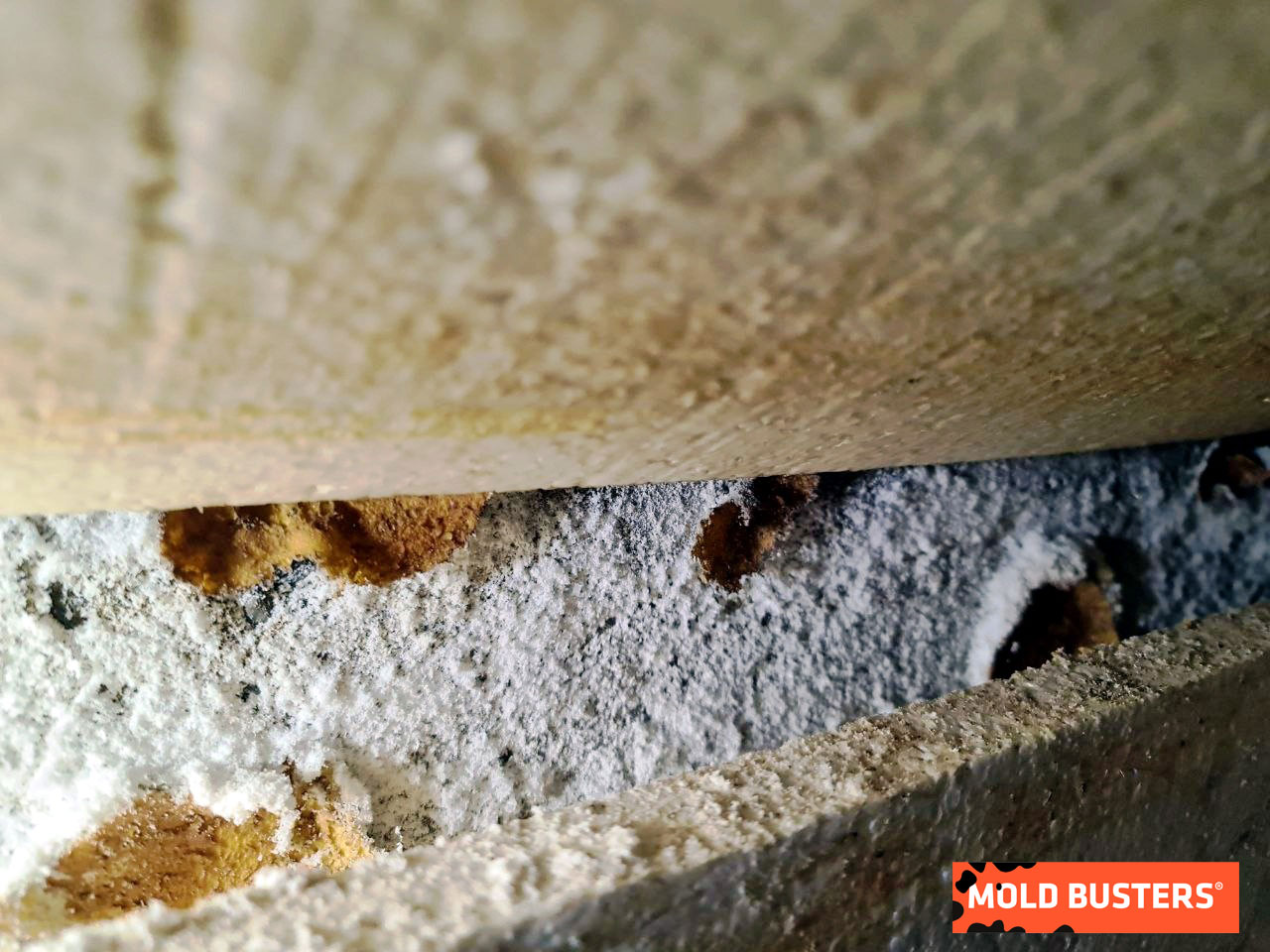
Efflorescence occurs when water dissolves minerals in a material, such as concrete, and then transports the minerals to the surface of the material. When the water evaporates, the minerals are left behind on the surface of the material. Efflorescence can occur on both porous and non-porous materials.
Causes of efflorescence
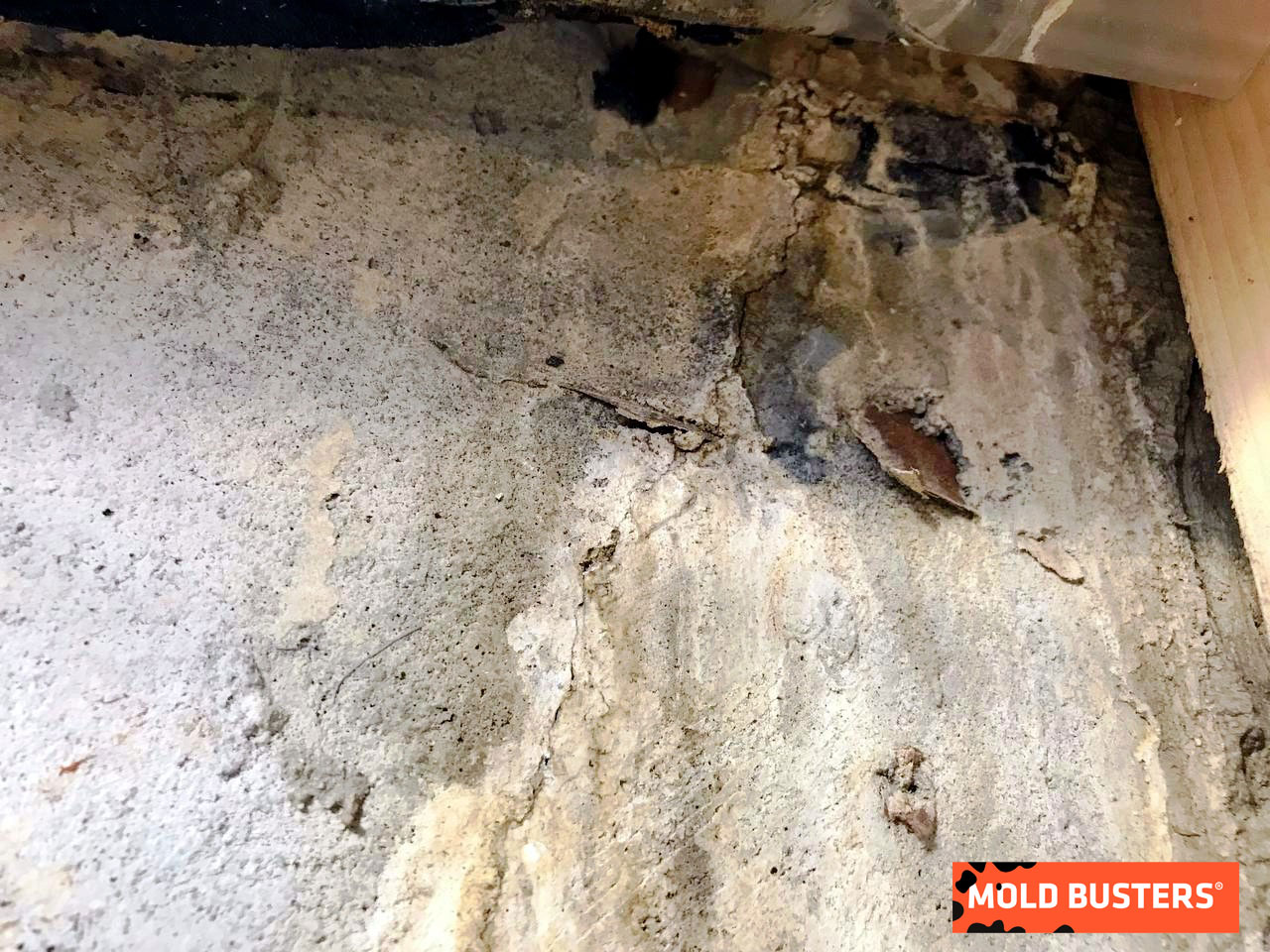
Efflorescence is a white powdery substance that can form on the surface of masonry materials like bricks, concrete, and stone. It’s caused by water seeping through the material and dissolving minerals in the masonry. As the water evaporates, it leaves behind the mineral deposits, which then form a white powdery film on the surface of the masonry. Efflorescence can also be caused by the condensation of water vapor on the surface of the material.
Where does efflorescence grow?
Efflorescence typically forms in areas where there is a high moisture content in the air or where the material is regularly exposed to water.
Efflorescence can occur on concrete, stucco, and other types of masonry. It is most likely to form in areas where there is a lot of moisture, such as near leaky pipes or in bathrooms. Efflorescence can also be caused by using certain types of cleaning products on masonry surfaces.
If efflorescence is left untreated, it can cause serious damage to masonry surfaces. It can cause the bricks to crumble and break down, and it can also lead to mold and mildew growth.
If you’re based in Montreal or Ottawa, our team can help you identify and address efflorescence issues in your home.
Efflorescence in basement
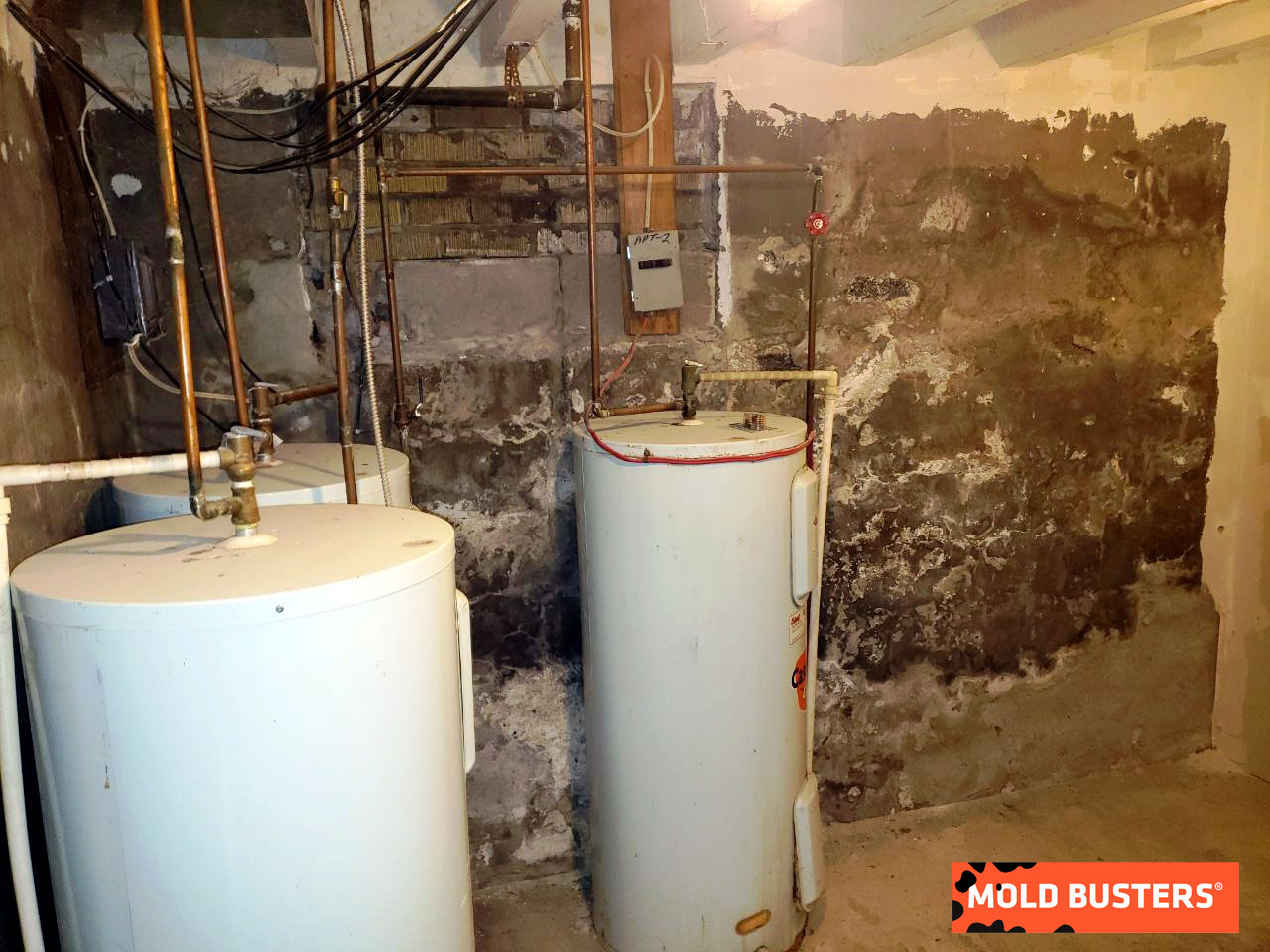
The main cause of basement efflorescence is when water seeps through cracks in basement walls and dissolves the salts that are present in the concrete. As the water evaporates, it leaves behind the salt deposits which then form a white powder on the surface of the concrete.
Efflorescence can be unsightly, but it is not harmful and can be removed with a wire brush or power washer. If you have efflorescence in your basement, you should repair any cracks in your basement walls to prevent further occurrence.
Efflorescence on brick surfaces
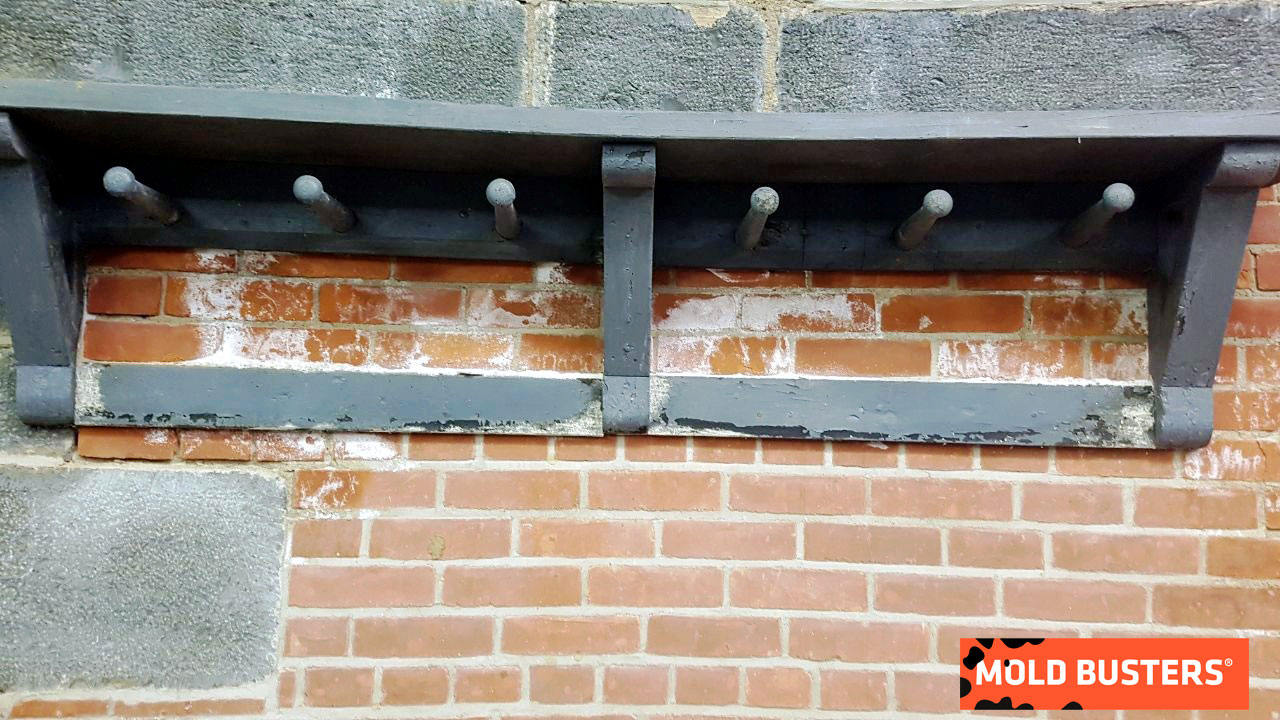
Efflorescence is a white powder that can be found on the surface of bricks. It is caused by water seeping through the brick and dissolving minerals. This water then evaporates, leaving behind the mineral deposits.
Efflorescence is not harmful to bricks, but it can be unsightly. It can also be difficult to remove once it has formed. If you are concerned about efflorescence, you can talk to a professional about ways to prevent it from forming.
Efflorescence on concrete surfaces
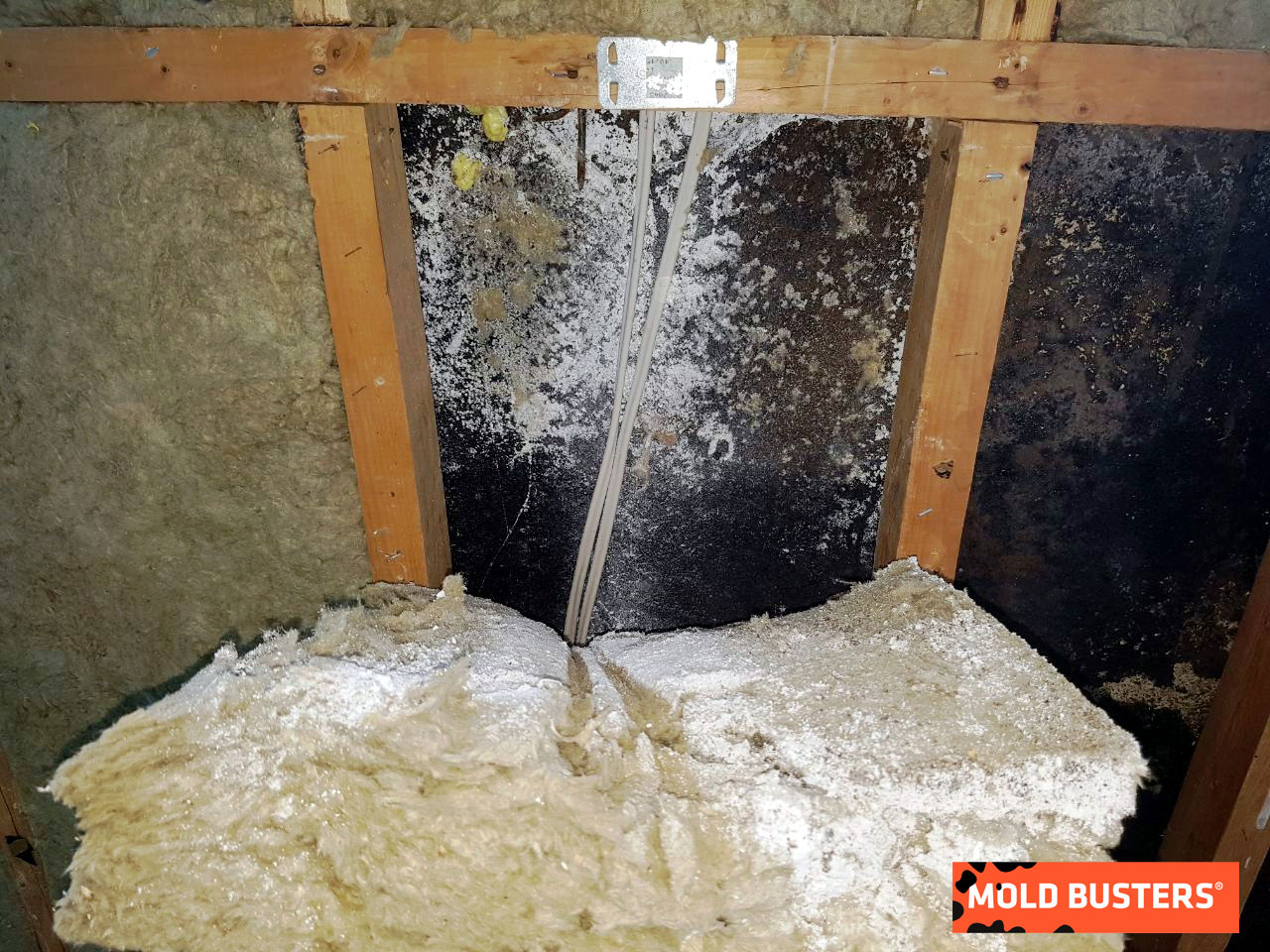
Efflorescence can form on concrete surfaces. It is caused by water seeping through the concrete and carrying minerals with it. Efflorescence can also be caused by using too much water when mixing concrete.
Efflorescence is not harmful to concrete, but it can be unsightly. It is important to remove efflorescence before applying any type of sealer or coating to the concrete surface. There are several ways to remove efflorescence, including using a brush or power washer.
If you have efflorescence on your concrete surface, don’t panic. It’s not harmful and there are several ways to remove it.
Efflorescence in grout
Efflorescence can form on the surface of the grout. Although it is not harmful, it can be unsightly and difficult to remove. Efflorescence is caused by water seeping through the grout and dissolving minerals in the underlying concrete. The water then evaporates, leaving behind the mineral deposits.
Efflorescence can be prevented by sealing the grout with a waterproof sealer. This will prevent water from seeping into the grout and causing efflorescence. If efflorescence has already formed, it can be removed with a stiff brush and some elbow grease. For stubborn deposits, you may need to use a chemical cleaner designed for removing efflorescence.
Efflorescence on pavers
Efflorescence can form on pavers. It is caused by water seeping through the pavers and dissolving minerals in the concrete. The mineral-rich water then evaporates, leaving behind the powdery efflorescence.
Efflorescence can be unsightly, but it is not harmful to the pavers. It can be removed with a stiff brush or power washer. If efflorescence is a recurring problem, it may be caused by poor drainage or a lack of sealant on the pavers.
Efflorescence on wood
Efflorescence can often be seen on the wood. It is caused by the leaching of soluble salts from the material and is often the result of high humidity or water exposure. While efflorescence is not harmful to the material, it can be unsightly and should be removed if possible.
Is efflorescence dangerous to health?
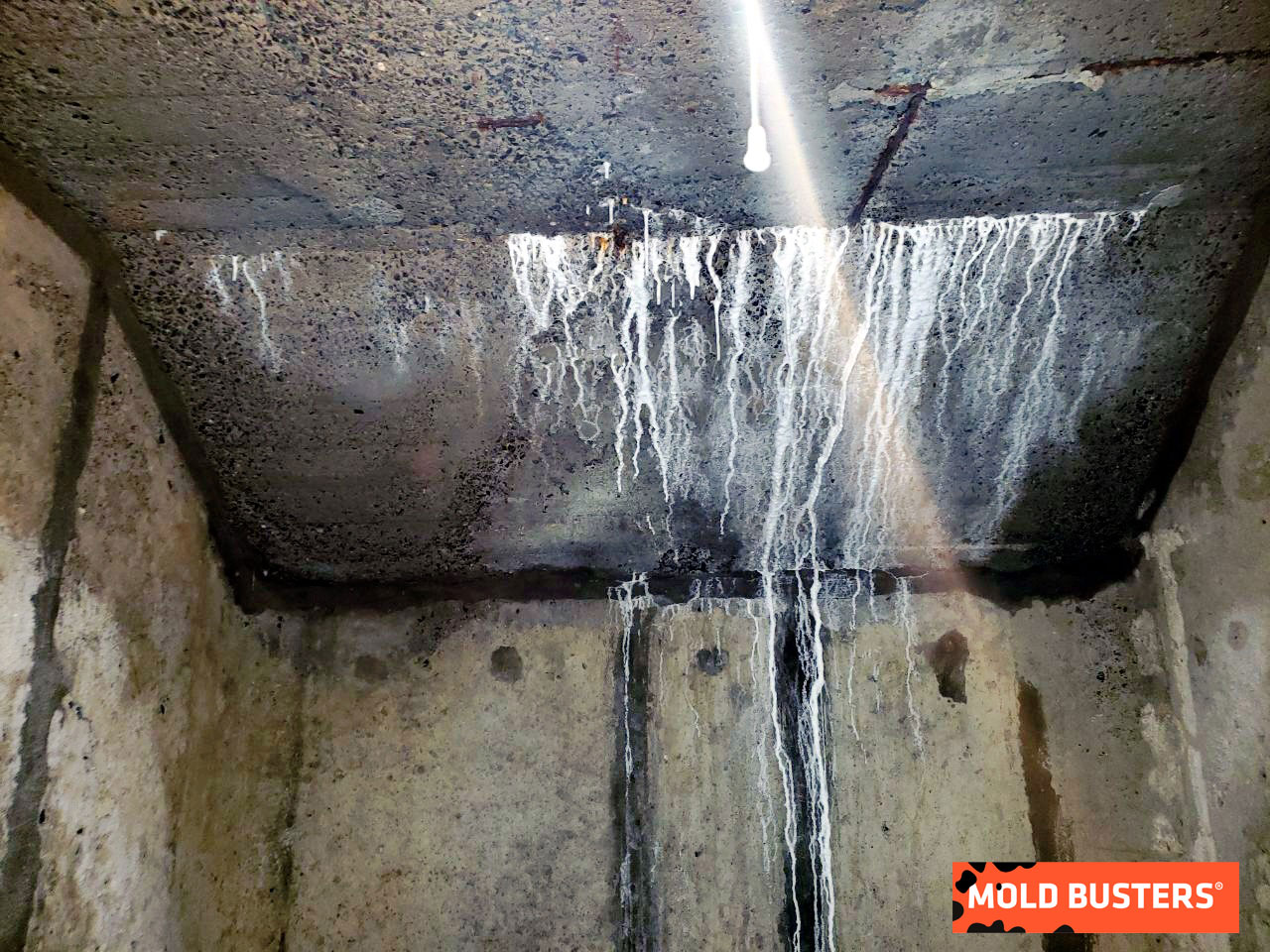
Efflorescence is not dangerous or harmful to humans or animals, but it can be unsightly and difficult to remove. Also, it can be an indication that there is excessive moisture present in the masonry, which can lead to other problems such as mold growth.
While efflorescence is not dangerous to health, it can cause significant damage to masonry walls if left untreated. Efflorescence occurs when water seeps into the masonry and dissolves the salts that are present in the bricks or mortar. As the water evaporates, the salts are left behind and form a white powdery deposit on the surface of the masonry.
The main concern with efflorescence is that it can cause damage to the materials it affects, making them more susceptible to deterioration and wear. Additionally, efflorescence can also make surfaces more difficult to clean and can cause staining.
Efflorescence vs mold – How to identify the difference?
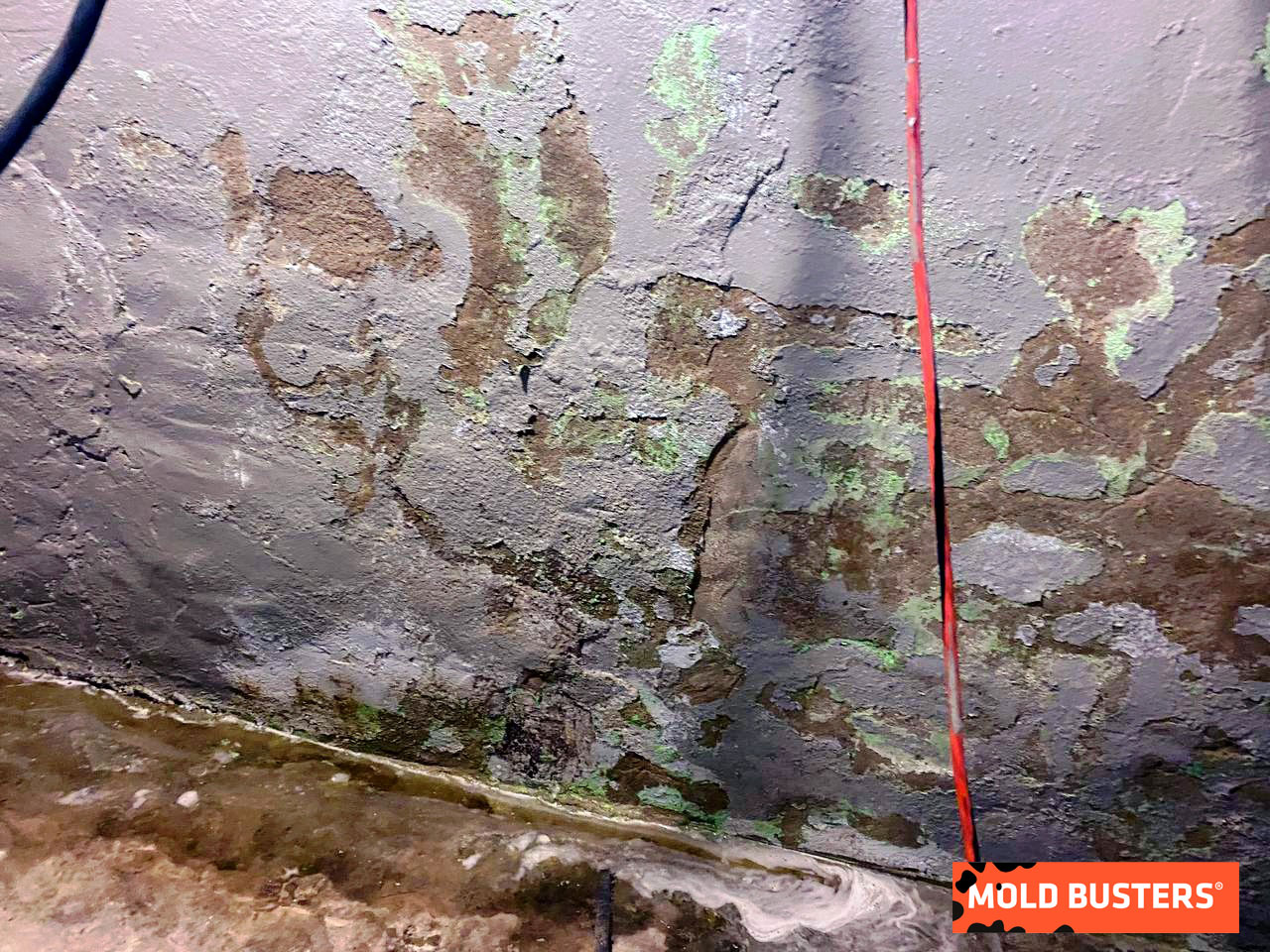
Efflorescence is the white powdery substance that sometimes appears on the surface of concrete or masonry. It is caused by the leaching of water-soluble salts from concrete or masonry.
Mold, on the other hand, is a type of fungi that can grow on many different surfaces, including concrete and masonry. Mold can cause staining and discoloration, and it can also cause the surface to become slippery.
The two are often confused because they can both appear as white, powdery growths on walls. However, efflorescence is caused by water vapor, while the mold is caused by liquid water.
How to remove efflorescence?
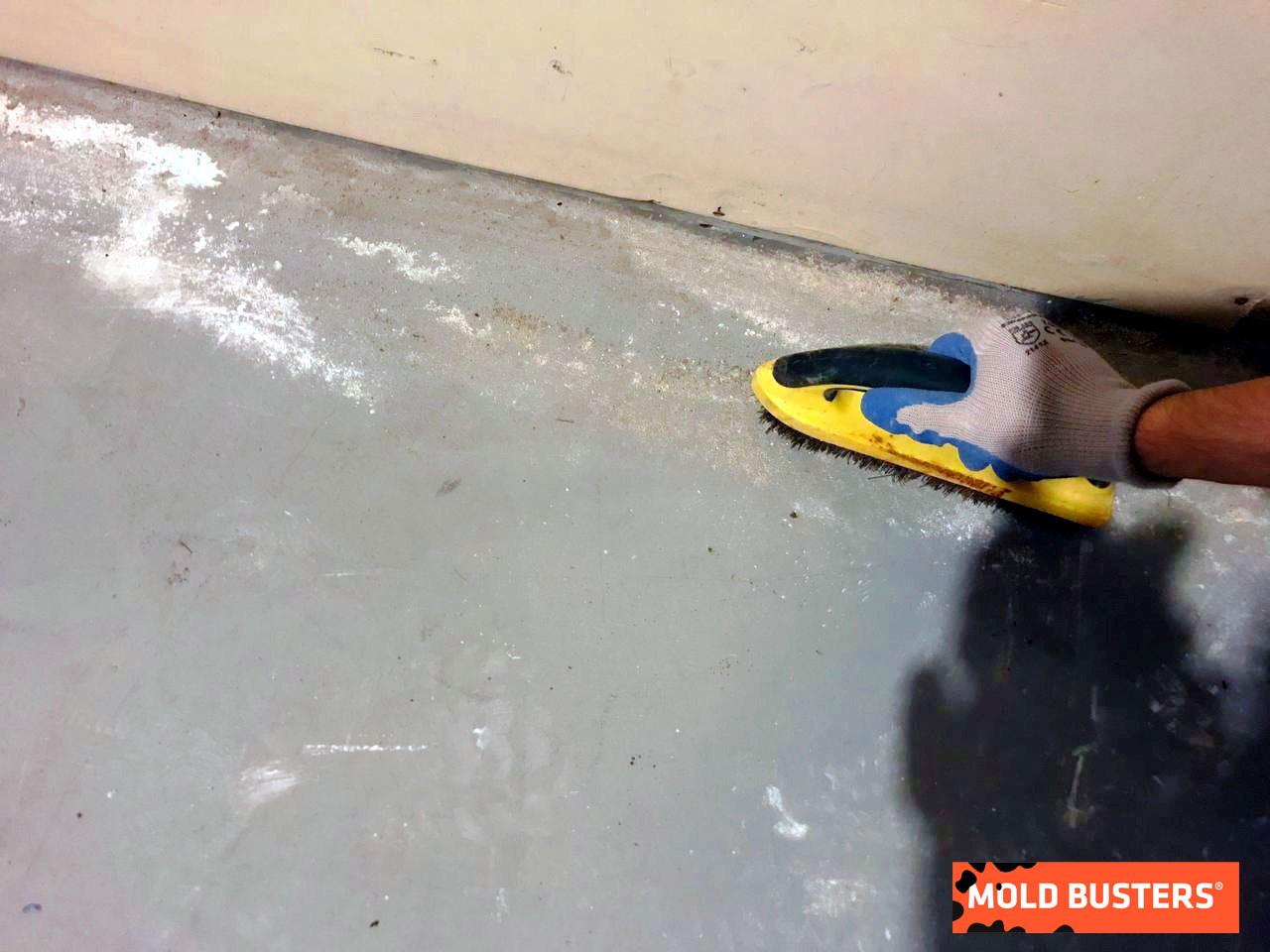
There are several ways to remove efflorescence from masonry surfaces. One way is to brush it off with a stiff brush. Another way is to wash it off with a garden hose or pressure washer. You can also use a chemical cleaner specifically designed to remove efflorescence.
Efflorescence is a white powdery substance that can form on masonry surfaces. It is caused by water seeping through the pores of the masonry and carrying minerals with it. As the water evaporates, the minerals are left behind and form a deposit on the surface.
If efflorescence is severe, it may require professional cleaning. A power washer can be used to remove light deposits, while heavy deposits may need to be sandblasted or removed with chemicals.
Prevention of efflorescence
There are several things that you can do to prevent efflorescence:
- Use a waterproofing agent: This will help to keep water from seeping into the masonry and dissolving the salts.
- Keep gutters and downspouts clean: This will help to keep rainwater from running down the sides of the building and getting into the masonry.
- Repair any cracks or holes in the masonry: This will help to keep water from getting into the masonry through small openings.
When to call a professional
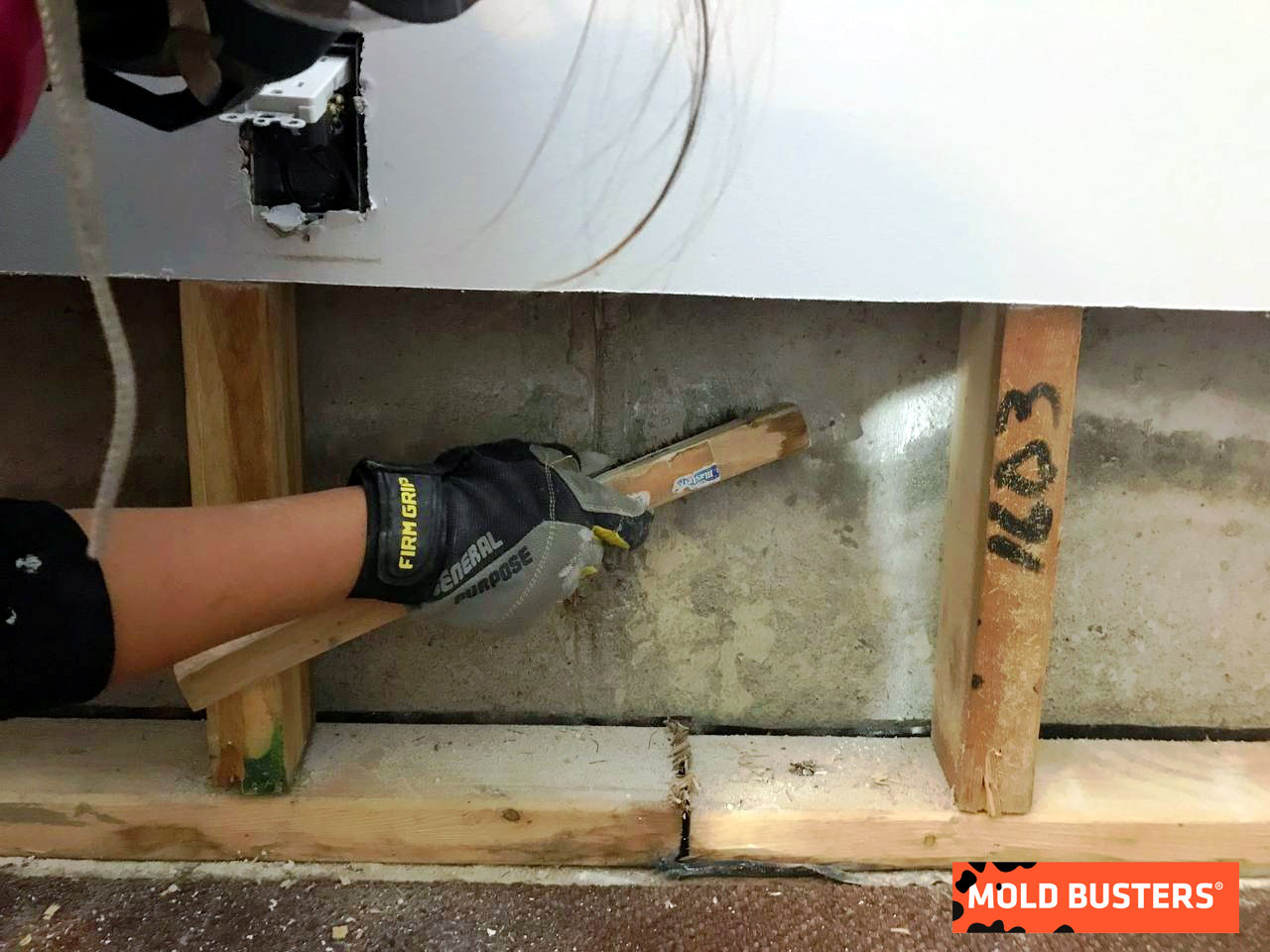
Most people know that efflorescence and mold are not good for their homes. But, many don’t know when it’s time to call a professional to help with these problems. Here are a few things to keep in mind when deciding whether or not to call a professional for efflorescence or mold.
If you see any mold growing on your walls, ceilings, or floors, it’s time to call a professional. Mold can cause serious health problems, so it’s best to get rid of it as soon as possible.
If you see efflorescence on your walls, ceilings, or floors, you should also call a professional. Efflorescence is caused by moisture and can lead to structural damage if left untreated.
Mold Busters can also help you with any concern regards to any mold issue or efflorescence recognition. Contact us to schedule a free virtual inspection of your property. You can also explore our mold removal services for comprehensive solutions.
Conclusion
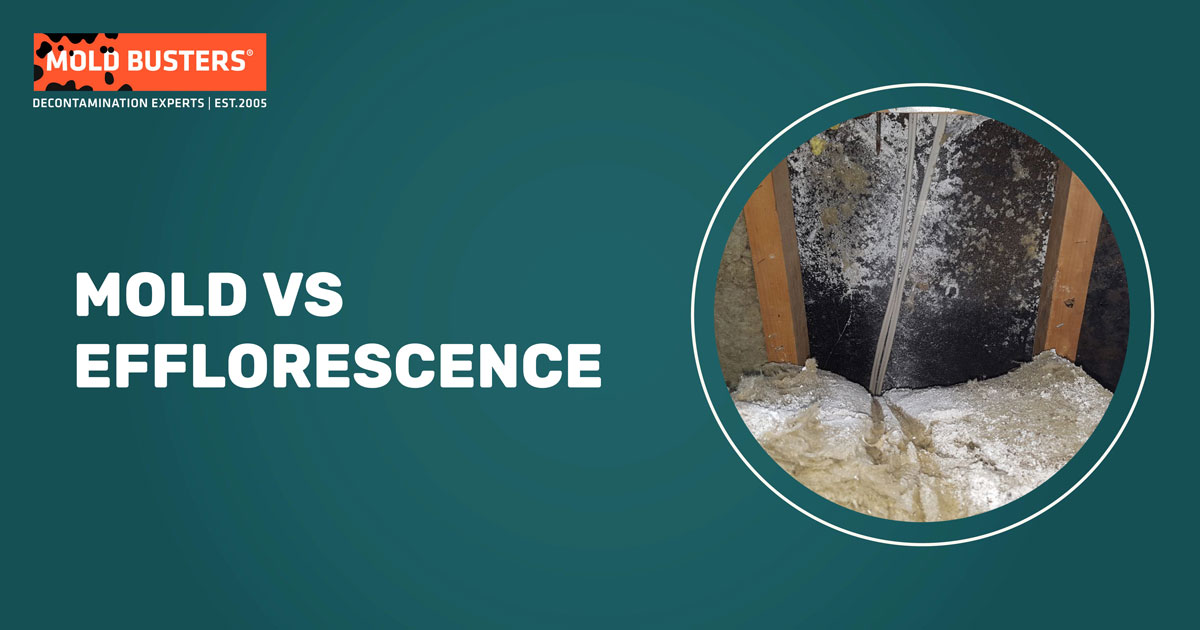
In conclusion, efflorescence and mold can both be unsightly and cause damage to your home. However, they are not the same thing. Efflorescence is a mineral deposit that can be removed, while the mold is a living organism that must be killed. If you have efflorescence, you can clean it yourself with some elbow grease and a little bit of knowledge. If you have mold, it’s best to call in a professional to handle the situation.
FAQ
Is efflorescence mold?
Mold is a type of fungus that can grow on many different surfaces, including efflorescence. While efflorescence itself is not mold, it can provide an ideal environment for mold to grow. Mold requires moisture to survive and thrive, and efflorescence often indicates that there is moisture present in the underlying concrete. If mold is present, it is important to address the source of the moisture to prevent the mold from returning.
What to do if efflorescence keeps coming back?
If efflorescence keeps coming back, you may need to remove the source of the moisture. This may involve sealing the porous materials that are allowing water to seep in or improving the drainage around the building. You may also need to remove any existing efflorescence before taking these measures.
Is efflorescence a building defect?
Efflorescence is a building defect that can occur when water seeps through the walls or roof of a building. This can cause the growth of mold and mildew, which can lead to health problems for the occupants of the building. In some cases, efflorescence can also cause the growth of bacteria, which can contaminate the air inside the building and cause respiratory problems.
How long does it take for efflorescence to disappear?
The rate at which efflorescence disappears depends on several factors, including the type of salt, the porosity of the substrate, the amount of water vapor present, and the temperature. In general, efflorescence will disappear more quickly in warm, dry conditions.

Get Special Gift: Industry-Standard Mold Removal Guidelines
Download the industry-standard guidelines that Mold Busters use in their own mold removal services, including news, tips and special offers:
"*" indicates required fields
Published: September 28, 2022 Updated: July 2, 2024

Written by:
John Ward
Account Executive
Mold Busters
Fact checked by:
Michael Golubev
CEO
Mold Busters
